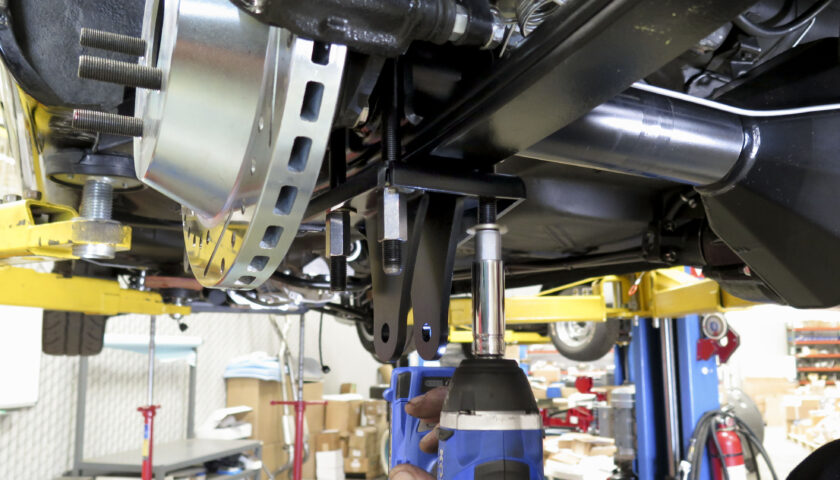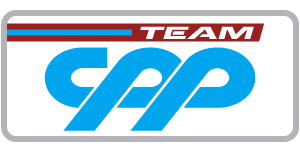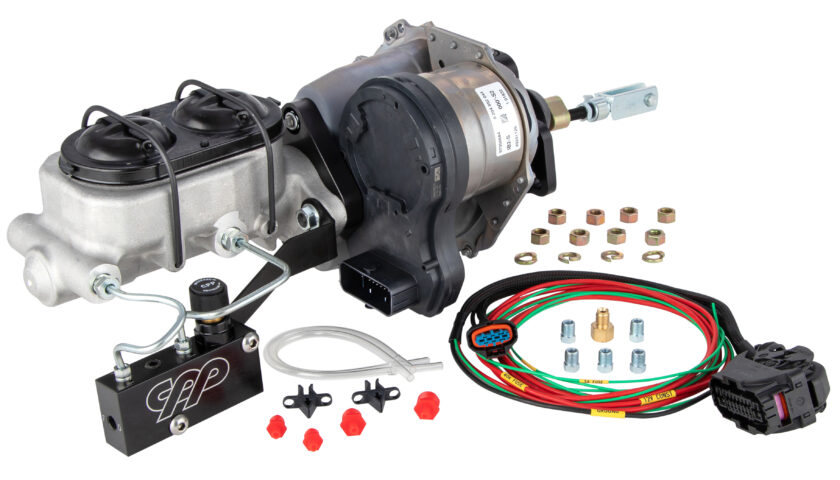So you’re running leaf springs on your Nova or Camaro, what happens if you really want to get the power down? You’ll probably want some sort of traction system like, say, CPP Traction Bars.
If you’re sending a lot of power through a set of leaf springs and grippy rear tires, odds are you might end up with an issue. That issue has many names including wheel hop, axle wrap, and tire shake. Regardless of what you call it, you’re losing precious time getting off the line and risk doing serious damage to your vehicle.
Related Story: CPP Narrow Leaf Springs: Get A 2″ Drop Plus Wider Tires On Your 1962 To 1967 Nova
Sooner or later you’re just going to need to solve those issues. An easy and cost effective way to do so is by installing CPP Street Trac Traction Bars.
These traction bars we’ll be installing today are made to work with first, second and third gen Nova as well as first and second gen Camaro. AKA 1962-1974 Nova and 1967-1981 Camaro (PN: 6281TB-S). They are also designed to work with both stock-width leaf springs or CPP’s Narrow Leaf Springs.
Click Here To See More Of Our 1967 Nova
How Do Traction Bars Work?
The purpose of a traction bar is to prevent the loss of traction. Contrary to popular belief, traction bars do not actually increase traction. If your vehicle isn’t experiencing axle wrap and/or wheel hop, installing traction bars will not give your car or truck added traction.
In leaf spring applications, when the vehicle begins to accelerate hard, the rearend wants to twist and pull forward. If the tires have grip, the only place for that twist to go is into the leaf springs. When this motion occurs repeatedly the result it is often known as axle wrap.
What the traction bars do is limit that twisting motion and prevent the rearend from pulling forward. In typical driving conditions, traction bars allow the leaf springs to work normally. As soon as the springs try to twist, the traction bars are engaged and act to keep the rearend in the correct location.
What’s So Good About CPP Street Trac?
Unlike other traction bars, CPP’s design will work with virtually any tie plate or shock mount setup. Because the rear brackets are separate, there’s no need for vehicle specific rear traction bar mounts. You can just bolt them on to whatever leaf spring tie plate and shock mount you’ve got.
Another bonus is leaf spring longevity. Again, some designs put undue stress on the leaf springs when the traction bars are engaged. The anti-torque strap on the front have flat engagement surface which spreads out the load more evenly. That, coupled with the specially designed mounting angle of the bars, means far less stress is exerted on your leaf springs.
How To Install CPP Traction Bars

Here is a look at everything that comes in the CPP Street Trac Traction Bar kit. From new U-bolts and hardware to mounting brackets and upgraded bushings, it’s all there. Even two different anti-torque straps for stock or narrow leaf springs.

Begin by dropping the front of your leaf spring and removing your old front bushings. Then use a rubber mallet to tap in the new D-Spec bushings provided in the kit.

If you are using CPP’s narrow leaf springs, make sure to use the provided bushing spacer to take up the extra offset.

Next, tap in the sleeve. Make sure an even amount of the sleeve is sticking out on either side.

Mount the front brackets and thrust washers on the sleeve as pictured.

Having difficulty installing the front of the leaf spring? Use an adjustable wrench to slightly tweak the spring pocket and give you more room.

Then lift the front of the leaf spring with brackets up into the spring pocket and secure it with the bolt and washer.

After fitting the U-bolts and tie plate, you can then install the rear traction bar brackets.

Make sure you get those U-bolt nuts tightened up real good to hold everything in place.

To prepare the traction bars, install the Heim Joint and locking washer on either side. One end of the traction bar rod has right-hand threads and the other has left-hand threads. This is to allow for easy adjustment of the bars once installed in the vehicle.

Before installing the traction bar in the rear mounts, make sure to insert the provided bushing.

Attach the traction bar to the rear mounts but wait until the end to fully tighten the hardware.

Next, slide the anti-torque strap over the top of the leaf spring and line up the bolt holes with the front mounting brackets.

Fit the front of the traction bar Heim Joint with the provided spacers.

Then, slide the front of the traction bar in place and insert the bolt to hold everything together. The top of the anti-torque strap should be flush with the leaf spring

With the car sitting at ride height, adjust the length of the traction bars by loosening the locking nut and twisting the bar. Adjust the traction bars so the anti-torque strap is just touching the leaf spring. Then tighten all hardware to the proper specifications.









[…] Related Story: Put The Power Down With CPP Traction Bars For Nova and Camaro […]
[…] (See the full story here) […]